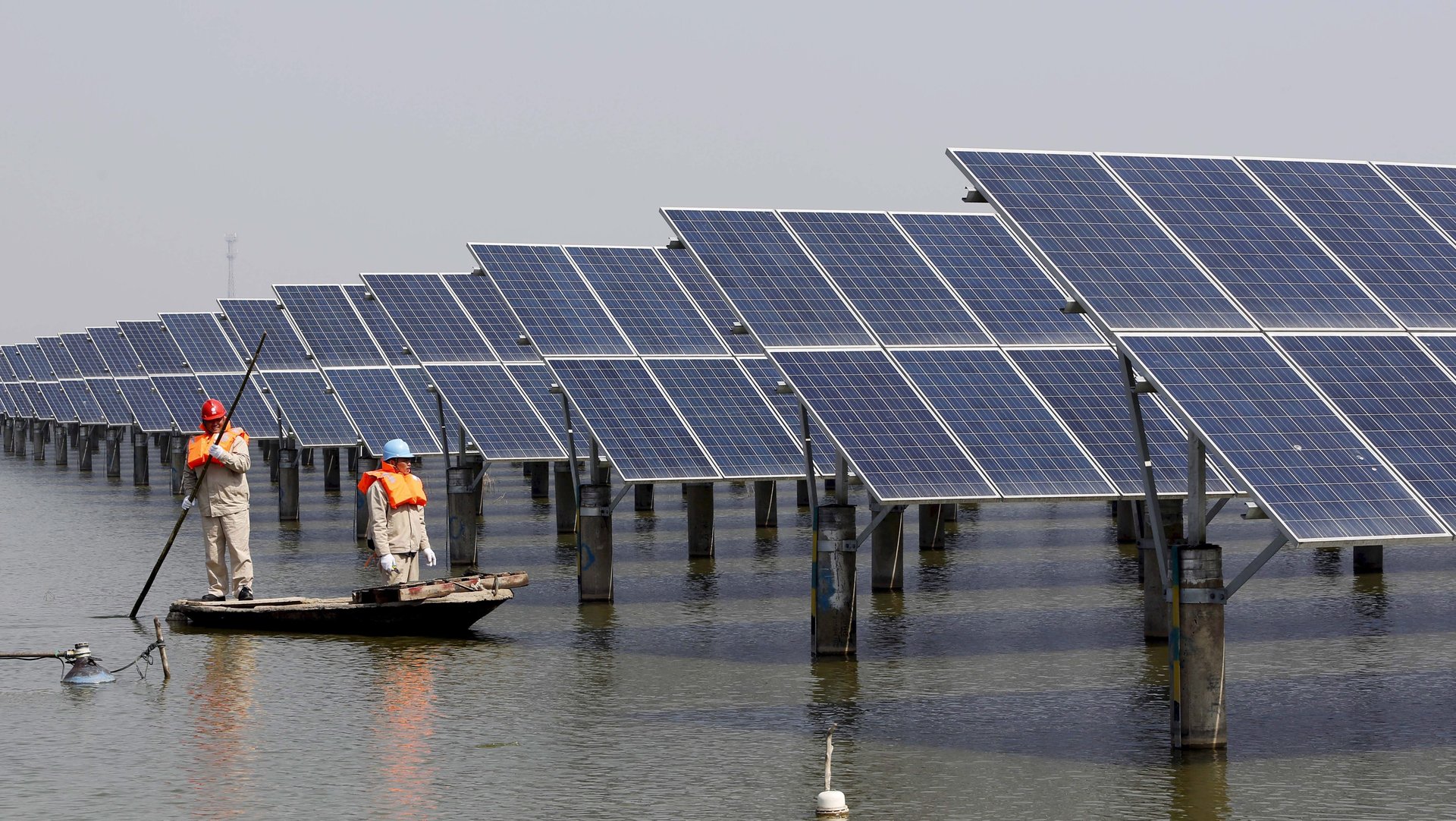Dead coal mines everywhere are being reincarnated as solar farms
The world is quickly abandoning coal, the dirtiest of fossil fuels. But that’s not the end of the road for coal mines—in many countries they’re coming back to life as solar farms.


The world is quickly abandoning coal, the dirtiest of fossil fuels. But that’s not the end of the road for coal mines—in many countries they’re coming back to life as solar farms.
Over the weekend, the world’s biggest floating solar project began operating in the eastern Chinese city of Huainan, which accounted for nearly 20% of the country’s coal reserves in a 2008 estimate. The 150-megawatt (MW) project consists of panels floating on a lake formed in a collapsed coal mine, according to (link in Chinese) the state-owned power company China Three Gorges Corporation, which began building the project in July.
The company said it had spent 1 billion yuan ($150 million) on the project, which it expects to come into full use in May 2018. At full capacity, it’ll be able to power around 94,000 homes. The project sets a new record in its class and will quickly eclipse another floating solar power project in the same city that became the world’s biggest such farm in August. The latter, which can supply electricity to 15,000 homes, also sits atop a former coal mine.
Huainan’s projects come as the world’s leading players are building up more solar power facilities.
Germany, which ranks third in terms of installed photovoltaic capacity, is also working on turning a coal mine with a half-century of history into a renewable energy plant. The plant will power 40,000 homes with energy from solar panels and wind turbines. The coal mine, located in the northwest of the country, is closing next year.
In the US, just behind Germany in terms of installed photovoltaic capacity, the Berkeley Energy Group is planning to turn a strip mine in the Appalachians (pdf, p.2) into a solar power plant that could produce somewhere between 50 to 100 MW of power in 2018.
In December last year, Harworth Group, a property and regeneration company in the UK, said it wanted to turn the country’s last deep coal mine, closed in 2015, into a 5-MW solar farm.
Building solar power plants atop defunct coal plants has several advantages, including putting otherwise hard-to-use lands to productive use. For example, the lakes the lakes that form in old coal mine pits are often characterized by high concentrations of sulfate, making them unsuitable for farming. A floating solar farm also works more efficiently thanks to the cooling effect of the water, as the World Economic Forum points out. In addition, the solar panels can mitigate water evaporation, helping to maintain the lake full for longer.